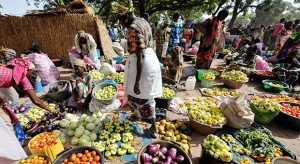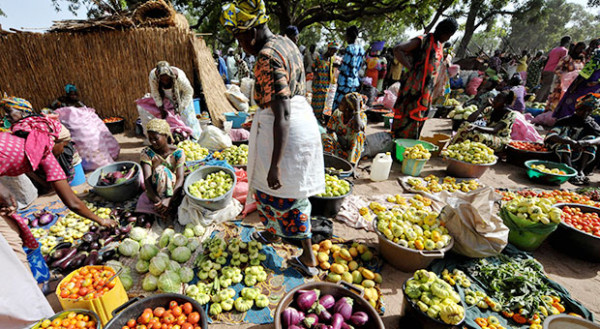Biodiversity for food and agriculture is among the earth’s most important resources, says the UN Food and agriculture Organization (FAO)*. It is indispensable: be it the insects that pollinate plants, the microscopic bacteria used for making cheese, the diverse livestock breeds used to make a living in harsh environments, the thousands species of fish, and other aquatic species in our lakes, rivers and oceans, or the thousands of varieties of crops that sustain food security worldwide.
[media-credit name=”Source: FAO” align=”aligncenter” width=”300″] [/media-credit]
[/media-credit]
- 17% of the livestock breedsreported in the course of 2013-14 to FAO by countries are classified as at risk of extinction.
- Half of the 8000 tree species reported in The State of the World’s Forest Genetic Resources 2014 are threatened at species or genetic level.
- Genetic erosion in plant genetic resources may be the greatest in the case of cereals, followed by vegetables, fruits and nuts, and food legumes.
- Unsustainable use, such as over-harvesting of fish stocks and deforestation, contribute to the loss of genetic diversity. For examples, approximately 29% of the commercially important marine fish stocks monitored by FAO are overfished.
The Responsibility of Maintaining Biodiversity
It is because of their genetic variability that plants, animals, micro-organisms and invertebrates are able to adapt and survive when their environments change.
In the light of climate change and the increasing human pressure on the natural resources, the conservation and sustainable use of genetic resources has become more critical than ever. A loss of biodiversity reduces the capacity of agriculture to respond to new socio-economic and environmental conditions.
Maintaining biodiversity for food and agriculture, including genetic resources, is a global responsibility.
FAO established the Commission on Genetic Resources for Food and Agriculture in 1983 and to date it is the only intergovernmental forum that specifically deals with all components of biodiversity for food and agriculture. (*Source: FAO)
Learn more:
- Infographics on Biodiversity for food security and nutrition
- Infographics on The State of the World’s Forest Genetic Resources 2014
- Infographics on The State of World Fisheries and Aquaculture 2014
Read also:
“Eradicating Poverty Goes ‘Hand in Hand’ with Biodiversity Protection”
Benefits of Investing in Protection of Biodiversity Outweigh Financial Costs — Report
‘Indigenous Knowledge Essential to Halting Biodiversity Loss’
‘Global Economy to Lose $1 Trillion Annually Without Action to Stop Ocean Acidification’
Five Garbage Patches Occupy 15, 915, 933 Square Kilometers of Ocean
Financial Damage of Plastic to Marine Ecosystems Stands at Over US$13 Billion Each Year
To Combat Hunger, UN Launches Initiative for Sustainable Use of World’s Oceans
‘Devastating’ Effects from Ongoing Destruction of Mangrove Forests
Forests Provide Jobs, Energy, Nutritious Foods and Ecosystem Services – Do Not Kill Them!
Forests Can Play a Crucial Role in Improving Global Food Security, Nutrition
Forests, a Matter of Life or Death for 1.6 Billion People!
1.6 Billion People Depend on Forests, But…
“As Long as There Is One of Us Standing, There Will Be a Fight to Protect the Forests”
Have Destroyed the Amazon? No Problem, Forests Will Pay the Bill
‘How KFC Is Junking the Jungle’
Save The Planet? Just Eat Cars, Drink Fuel!
Big Business Suffocating Our Lungs
All the Benefits of Amazon Plants and Foods in a UN Book
Eighty Per Cent of World’s Forests Degraded, Destroyed
2014 Human Wrongs Watch










